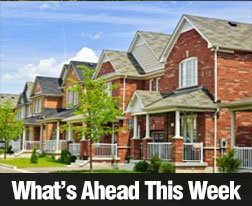A Quick Guide to the FHA Streamline Refinance Mortgage Loan Program
 Refinancing a home loan can provide numerous benefits, but it can also seem daunting and intimidating to some. Many homeowners would love to lower their interest rate or take advantage of other benefits associated with refinancing, but they are concerned about the time and expense associated with refinancing their current mortgage. The FHA Streamline Refinance loan program is designed to provide those who currently have an FHA loan with an easier way to refinance their mortgage, and this may be a desirable option for many.
Refinancing a home loan can provide numerous benefits, but it can also seem daunting and intimidating to some. Many homeowners would love to lower their interest rate or take advantage of other benefits associated with refinancing, but they are concerned about the time and expense associated with refinancing their current mortgage. The FHA Streamline Refinance loan program is designed to provide those who currently have an FHA loan with an easier way to refinance their mortgage, and this may be a desirable option for many.
No Appraisal Needed
One common complaint that people have when applying for refinancing relates to the expenses and time, and the appraisal can have a big impact on both of these factors. The good news is that with the FHA Streamline Refinance loan program, there is no requirement for a new appraisal. The home value at the time of the original loan will be used with the refinance loan, and this is truly beneficial for those who are currently underwater with their home value due to decreasing property values.
Lower Interest Rates
With the FHA Streamline Refinance loan program, borrowers can take advantage of today’s interest rates without needing to go through a full refinance process. This loan program is available to those who have a current FHA loan program, and it is a great program for those who have an interest rate that is higher than the current rates to lock in a lower rate and a lower mortgage payment.
Great Loan Terms
As with the traditional FHA loan program, the Streamline program also offers great loan terms. Borrowers can choose between a 15 and 30-year fixed rate loan, and borrowers will not be subject to a prepayment penalty. These loan terms provide borrowers with flexibility when refinancing their loan to take advantage of a lower interest rate.
The FHA Streamline Refinance loan program is just one of several options available to borrowers who are interested in refinancing their current FHA loan program. It offers numerous benefits to homeowners, but it is not the only option available.
It is wise for homeowners who are interested in refinancing their current mortgage to compare all of the options thoroughly before making a decision. It is best to seek assistance from a trusted mortgage professional. They can help with specific information and guidance with the selection of the right a loan program for each homeonwers needs.

 Last week’s economic news included several reports related to housing. The Case-Shiller 20-City Home Price Index for June rose to 4.50 percent as compared to May’s reading of 4.40 percent. Denver, Colorado was the only city to post double-digit year-over-year growth. FHFA also released its House Price Index for June. Home prices for properties associated with mortgages owned or backed by Fannie Mae and Freddie Mac rose at a year-over-year rate of 5.60 percent in June as compared to May’s reading of 5.70 percent.
Last week’s economic news included several reports related to housing. The Case-Shiller 20-City Home Price Index for June rose to 4.50 percent as compared to May’s reading of 4.40 percent. Denver, Colorado was the only city to post double-digit year-over-year growth. FHFA also released its House Price Index for June. Home prices for properties associated with mortgages owned or backed by Fannie Mae and Freddie Mac rose at a year-over-year rate of 5.60 percent in June as compared to May’s reading of 5.70 percent. Newer properties may be infused with built-in designer touches that give them an instant sense of luxury, but older homes may lack many of these built-in features. Whether buying or renovating an older property, many people are interested in learning how to instill modern luxury in older property. The good news is that this is easier than it sounds, and it can be accomplished by following a few simple tips.
Newer properties may be infused with built-in designer touches that give them an instant sense of luxury, but older homes may lack many of these built-in features. Whether buying or renovating an older property, many people are interested in learning how to instill modern luxury in older property. The good news is that this is easier than it sounds, and it can be accomplished by following a few simple tips.